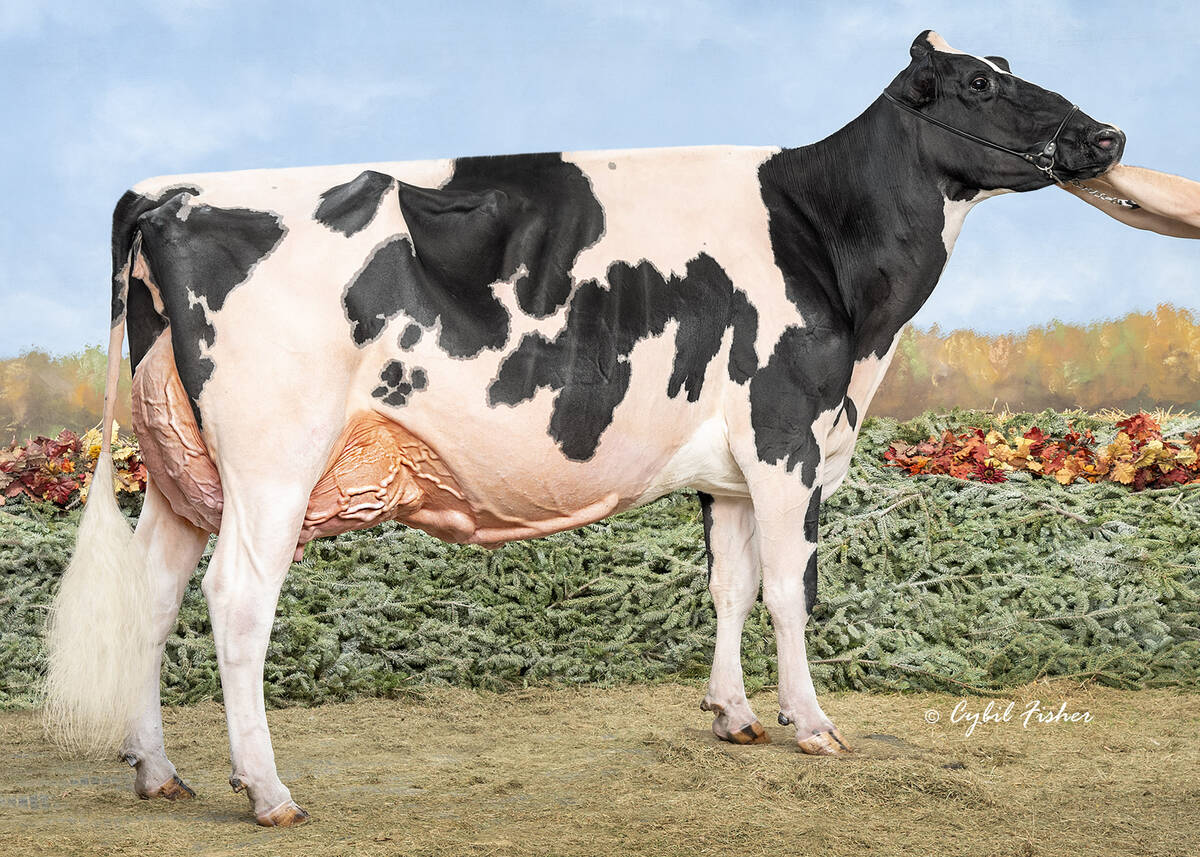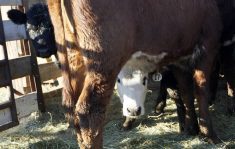August can be a bad month for cattle producers if the rain doesn’t fall.
That’s why corn seed grower Ron Catt has a back-up plan: a few acres of green corn.
A rancher with predominantly hay and bushy sand hills near Pratt, Man., Catt first became interested in corn grazing as a way to produce more tonnes of forage for his 70-cow herd.
He found that seeding some of his land to corn allows him to tap a low cost, high quality feeding alternative if the weather turns unfavourable in late summer.
Read Also

Saskatchewan dairy farm breeds international champion
A Saskatchewan bred cow made history at the 2025 World Dairy Expo in Madison, Wisconsin, when she was named grand champion in the five-year-old Holstein class.
If the rain does come, the corn can be cut for silage or set aside for winter grazing.
At $75 per acre input costs, he said planting a few acres of open-pollinated corn as a hedge against a summer dry spell is a gamble that won’t break the bank even if something goes wrong.
In hot weather, corn doesn’t lignify, or convert into wood, at temperatures higher than 31 C, unlike perennial grasses such as alfalfa, which makes them less digestible and less palatable for cattle.
“If you graze alfalfa in June, you can get two pounds per day of gain. But in August, you’re lucky if you get a pound a day.”
Per acre, the cost breaks down to $25 for seed, $25 for 40 to 50 lb. of nitrogen fertilizer and $25 for weed control.
“With the high cost of grain, people needs some alternatives,” said Catt, who began growing the corn as an experiment in 2001.
In 2006, confident that the tall open-pollinated variety, which requires about 2,250 heat units, would work for other cattle producers, he began selling 55 lb. bags for $100 each.
Most cattle ranches are on lighter soil not suited for high yield, high-input hybrid corn varieties.
Catt said if they plant corn for grazing or silage, they shell out big dollars and then pray they’ll recoup their costs.
“With hybrids, everything is bred for optimum inputs, optimum weather conditions and optimum moisture. Hopefully, you receive optimum yields. But how often does it work out that way?”
Putting 800 lb. steers on the green leaf corn starting in the end of July and then grazing them as the corn matures in fall makes for a smooth transition ahead of eventually finishing on grain in December.
“I’m thinking you could have those cattle finished by November or December, or at least to a point where 50 days in a feedlot would do it,” he said.
“So there’s a definite cost savings, and I think that’s what we’re all talking about in the cattle industry right now.”
The practice would also take the pressure off dormant perennial pasture grasses in late summer, leaving them for the cows later in fall after weaning, when their nutritional requirements are lower.
Larry Fischer, a Manitoba Agriculture farm production adviser based in Gladstone, Man., said the results of a trial of 11 steers fed Catt’s open-pollinated standing green leaf corn last summer were excellent.
Two of the animals gained an average of three lb. per day. The overall average was about 2.25 lb. per day.
The project, which was organized with the Manitoba Forage Council, is looking for a way to finish cattle without grain. It ended up finishing steers on second-cut alfalfa.
The corn was planted in three-week intervals in spring to delay maturity so that the cattle, which had just been moved off pasture, wouldn’t find cobs on the stalks.
The cattle were put on the corn beginning July 31 and left there until Oct. 31. The grazing was rationed with a single strand of electric fence and a temporary alley allowing them to go back over previously grazed areas for water.
Feed tests on the corn showed high energy content and adequate protein – from 12 percent early on down to eight percent later in the season.
“It worked pretty good,” Fischer said.
“It’s definitely cheaper than conventional corn. If they’re in an area that really dries up in July or August, it would be a good fill. Cows and calves would do exceptionally well on it.”














